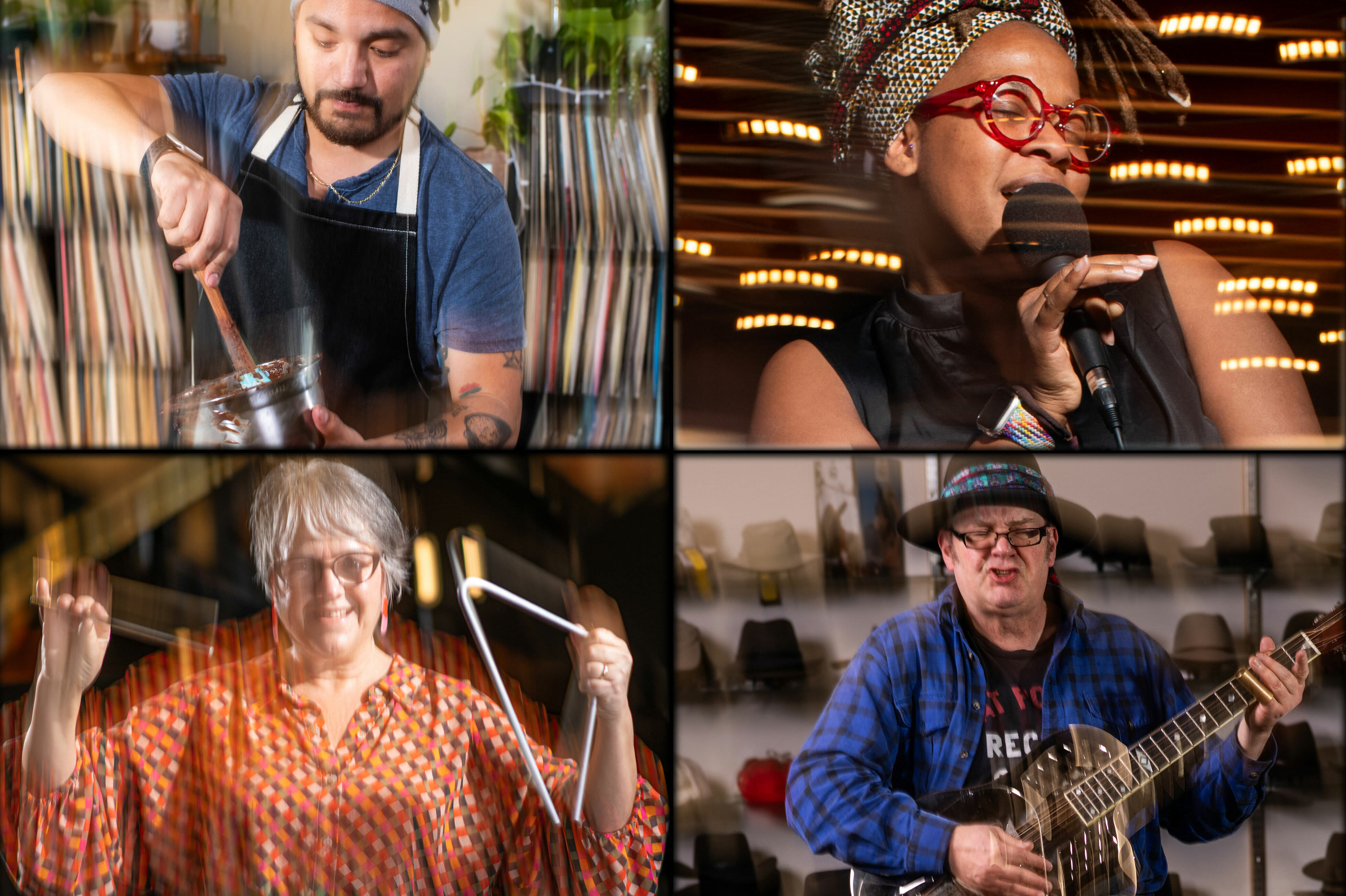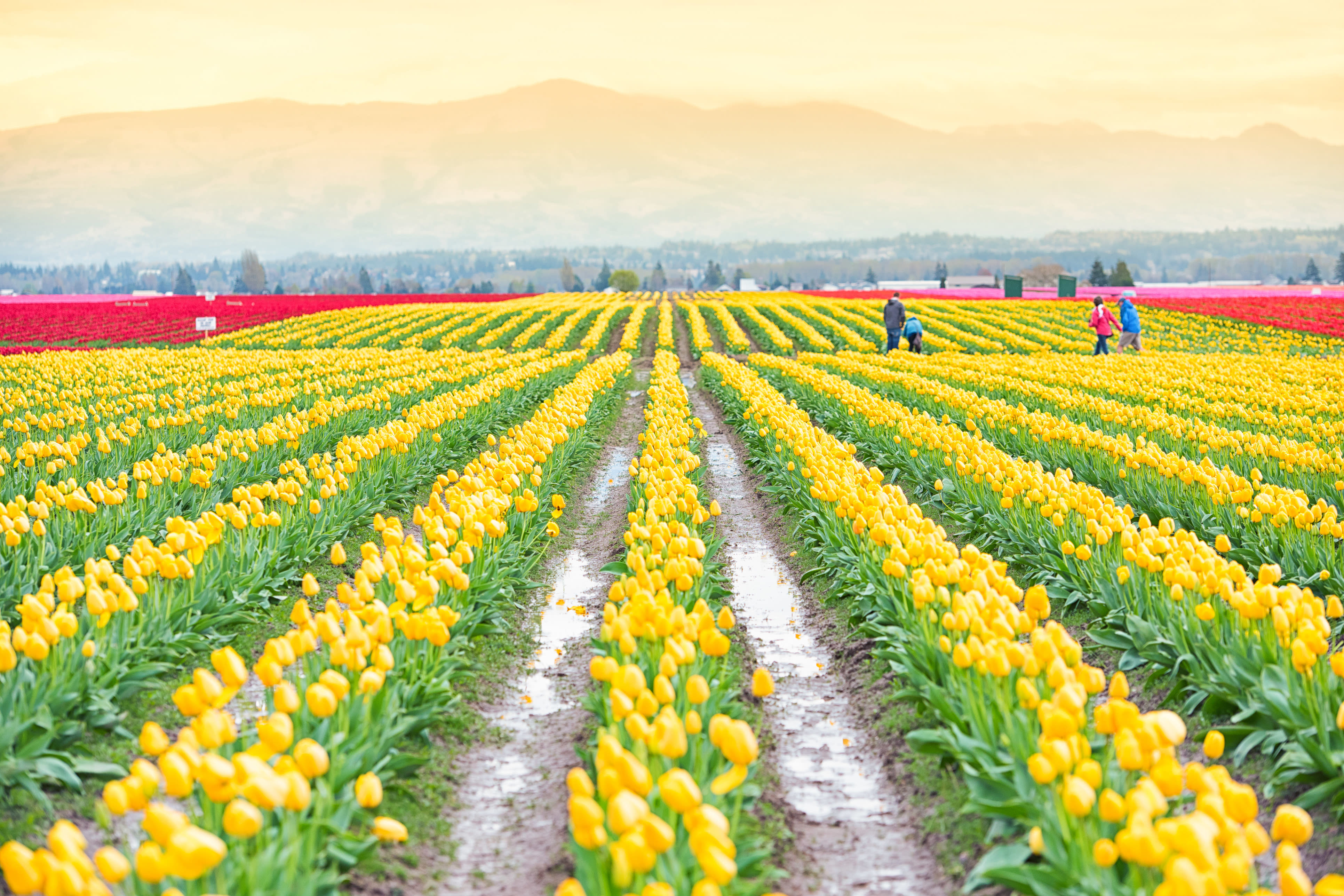Best Seattle Rock Climbing Gyms
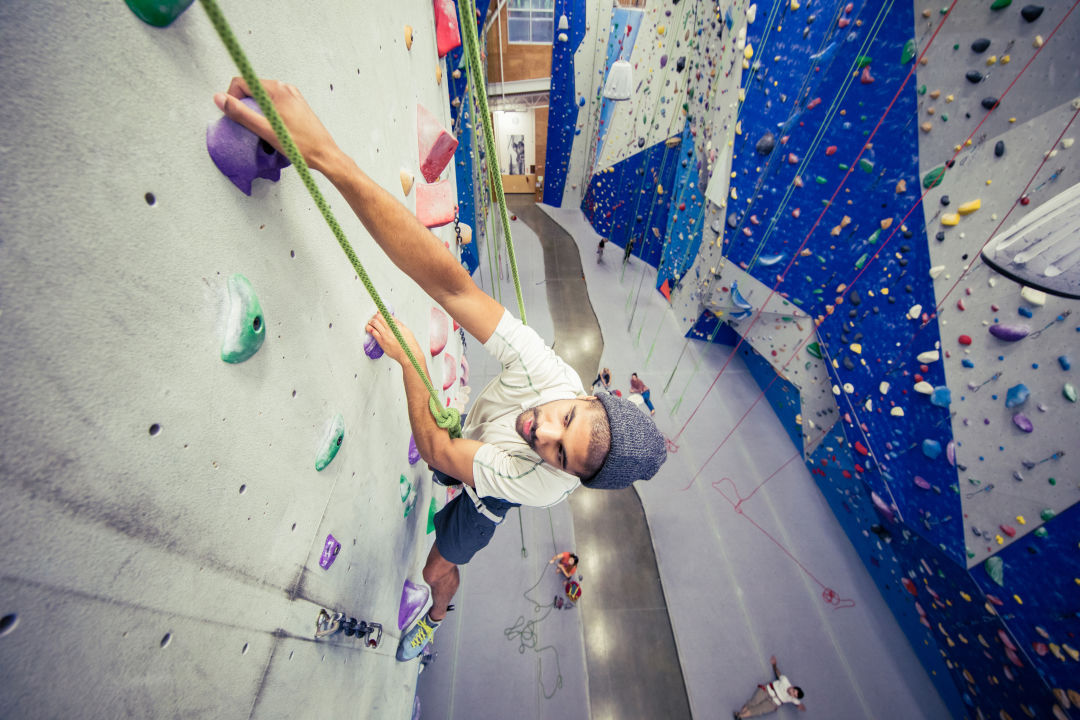
Edgeworks Bellevue’s climbing wall reaches 40 feet into the air.
Image: courtesy edgeworks
Climbing Gyms
Edgeworks Climbing and Fitness
ballard and Bellevue
The gym formally known as Stone Gardens has been a Ballard mainstay since the 1990s, its unique outdoor wall jutting over the Burke-Gilman Trail toward the Ballard Locks (for when you want to climb with a public audience). Sold to Tacoma’s Edgeworks Climbing and Fitness in 2020 along with Stone Gardens Bellevue, its Eastside location has seen a big expansion with new locker rooms and walls to climb, plus an upcoming guide services office and a bouldering location nearby.
Vertical World
Interbay and lynnwood
Someone had to be first. When it comes to indoor climbing gyms, Seattle’s Vertical World launched the concept in 1987, attaching holds with glue to vertical pieces of plywood. Today anchored in Interbay but with an outpost in Lynnwood, the gym juggles the now-usual brand of offerings: birthday parties, youth camps, and adult classes, plus a multitude of rope belay stations but also a small bouldering area. The rainbow of walls make for an intimidating but thorough introduction to the sport.
Seattle Bouldering Project
Judkins Park and Fremont
Bouldering was still a rather niche sport when SBP opened in 2011, a no-ropes, low-elevation version of climbing whose marked routes went by the beguiling name of “problems.” Its two founders built out a warehouse in an industrial corner of the Central District, testing their crash pad floor by leaping from the indoor staircase. Today, SBP original includes yoga studios, a cafe, and a thriving social scene, along with a pair of Fremont locations. The Bouldering Project company itself has expanded as far as Texas and Washington, DC.
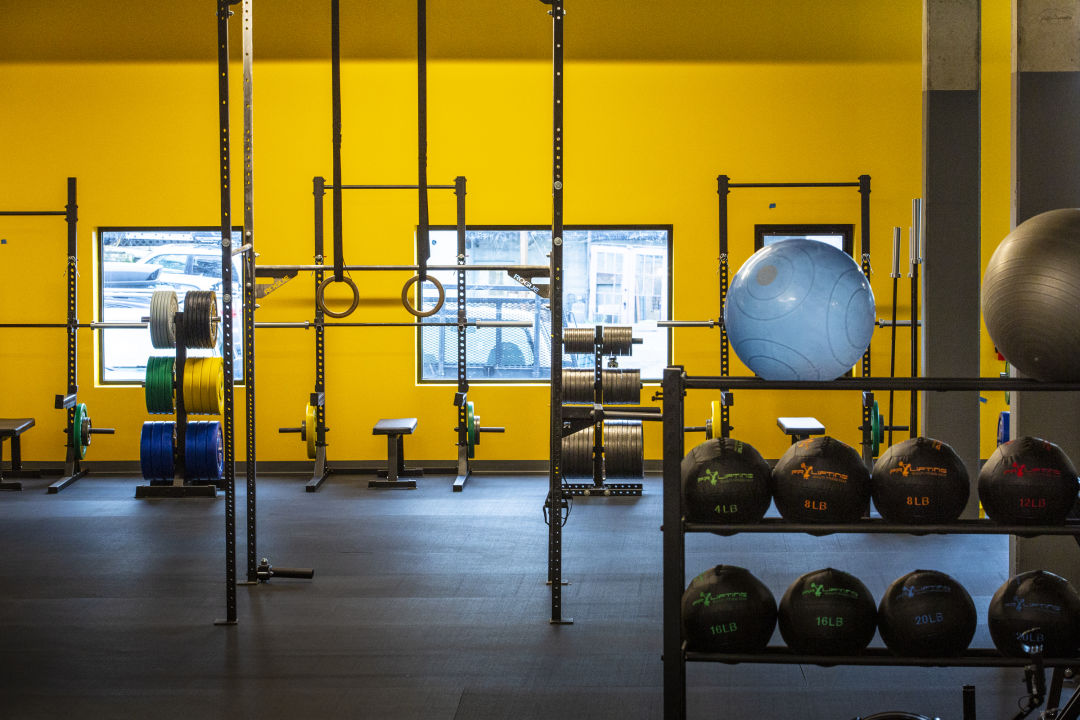
The Seattle Bouldering Project weight room—because you can't climb every minute of the day.
Momentum Indoor Climbing
Sodo
Seattle gyms had long been a homegrown bunch before Utah’s Momentum opened here in 2018 with a SoDo bouldering facility. Smaller than Seattle Bouldering Project, the space can have a calmer vibe and an easier transition from traditional gym equipment to problem wall. It runs an adult bouldering league, a decentralized team competition in which climbers earn points by climbing on Tuesday nights.
Half Moon Bouldering
Greenwood
Though the indoor space sports the same rainbow-colored holds to mimic the bumps and bulges of real rock, here the walls are the calming hue of sandstone. Opened during the pandemic, Half Moon manages a distinct neighborhood and kid-friendly vibe thanks to a learning area specifically built for climbers of every size. That corner is impossible to miss—just look for a castle-shaped wall ideal for Monty Python reenactments.
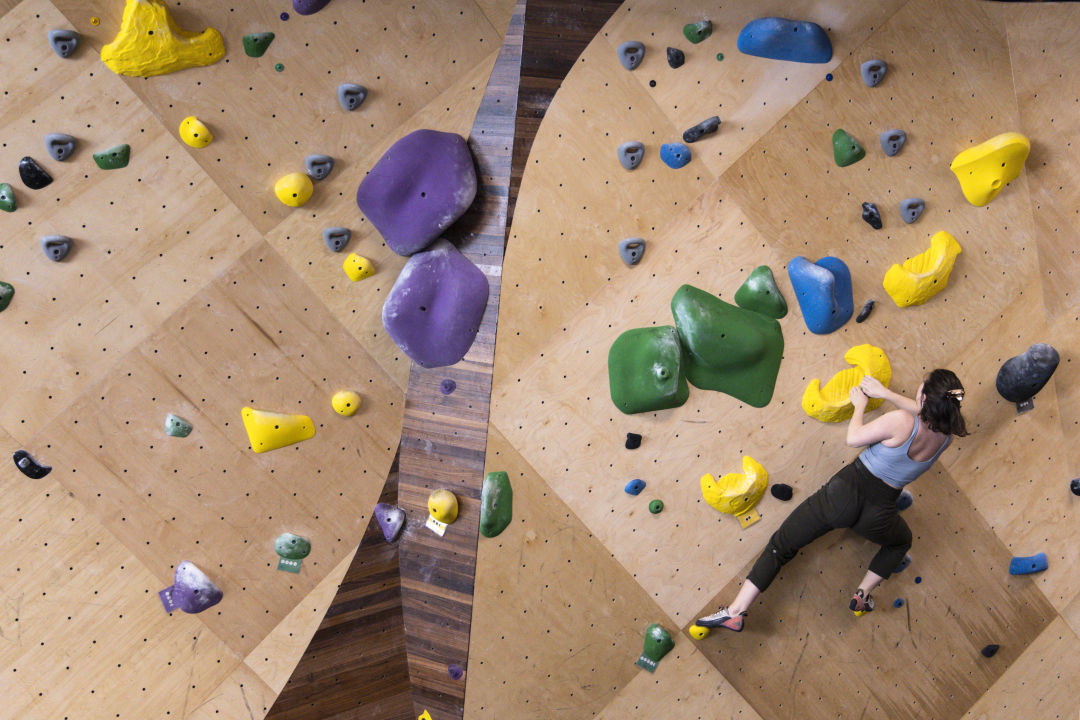
No ropes required at Half Moon Bouldering.
Image: Taylor mckenzie Gerlach
Uplift Climbing
Shoreline
Like so many other newer climbing gyms, this Shoreline spot focuses on bouldering, a choice that negates the need for sky-high ceilings and complicated rope systems. But unlike similar outfits, Uplift aims for the obsessive and competitive climber, not necessarily the birthday parties or beginners. In a building that somehow has a past as both a library and a disco club, the gym touts its overhangs—walls tipped to as much as 60 degrees downward.

Most climbing gyms offer gear rentals and intro classes, though all roped spaces require a belay test before gymgoers can anchor another climber.
Icon: studio 365 / noun project
Out of Bounds
The Mountaineers
Sand Point
It’s only apt that the headquarters for Seattle’s century-old outdoor club has its own climbing wall, complete with a chimney feature and rappel stations. But the basalt column sculpture out front is climbable too (with trad gear), as is a kid-friendly boulder—open to all unless a Mountaineers course is using them.
Schurman Rock
West Seattle
Standing 20 feet high in a West Seattle park since 1939, the Camp Long edifice claims the title of North America’s oldest outdoor artificial climbing wall. Seattle Parks and Recreation hosts classes, but anyone is welcome to noodle around on the fake crag.
Husky Rock
Montlake
Though University of Washington students get access to an indoor climbing gym, the public can also enjoy the outdoor bouldering surface that dates back to the 1970s. Legend is the angular structure between the stadium and the Montlake Cut was partly created to stop undergrads from climbing campus buildings.
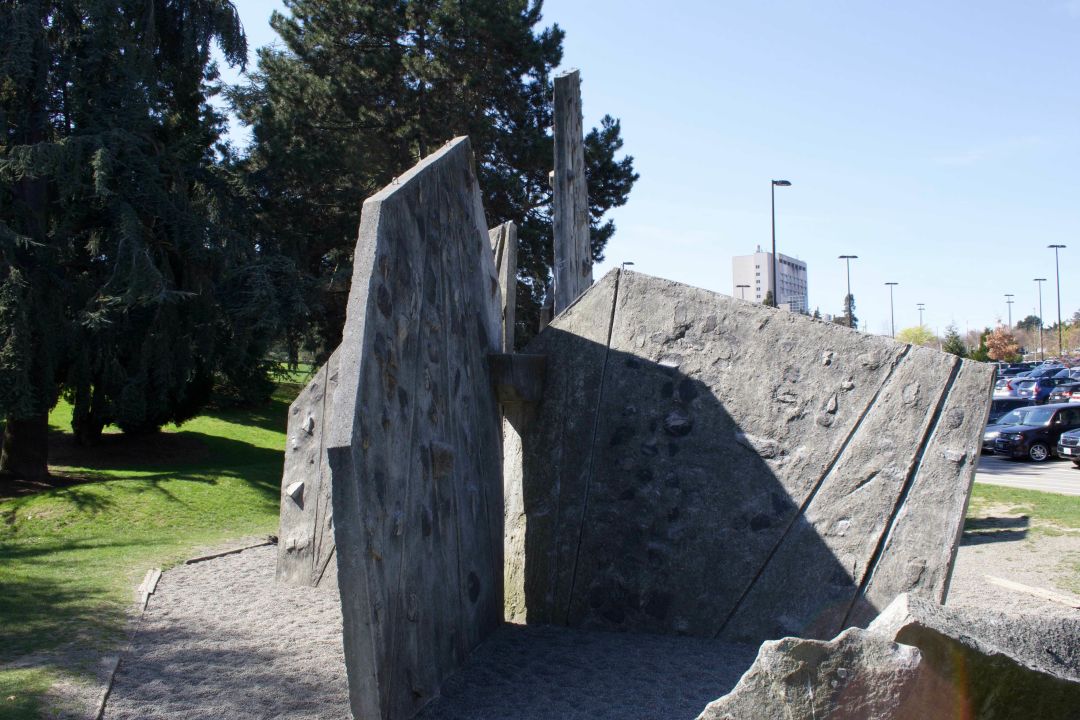
Husky Rock: Where to get your unofficial degree in climbing.
Marymoor Climbing Wall
Redmond
With its sharp pyramids and hieroglyphic-like designs, you’ll be forgiven for mistaking Marymoor Park’s outdoor crag for a leftover Dune prop. With more than 30 bolted routes and many more bouldering options, the structure far surpasses playground status.

Don Nguyen gets serious about diversity in a fun sport.
Image: Courtesy Don Nguyen
The Color Bar
Mountain guide Don Nguyen noticed something as he led clients up Mount Rainier in the mid 2010s: The people playing in the outdoors looked very different from those in the city just a few hours away. The racial divides he saw put him “back in 1955 America,” he says. “It just goes right back in time.” So in 2017, Nguyen and fellow climber Mariko Ching launched the nonprofit Climbers of Color to do something about it.
The key, he thinks, is the mentorship gap. Since BIPOC climbers don’t have leaders within their communities teaching them how to set up a top rope or cross a glacier crevasse, newbies can’t embrace outdoor sports. Climbers of Color seeks to fill the expertise gap through formal classes and workshops, but even more importantly, through community.
The org also hosts gatherings at local gyms—monthly events at every single place on our list—where the goal is to create a relaxed scene for BIPOC climbers in a friendly space “that breaks down the big city feel that you often get walking into a climbing gym,” says Nguyen. Not an exclusive group-within-a-group, but a way to ease communication between new BIPOC climbers and longtimers.
On outdoor courses and in the gym, Climbers of Color introductions are not solely about names but also pronouns, heritage, what lands everyone has come from. The goal, Nguyen says, is “trying to get the whole human story”—and making sure the community creates space for it.

